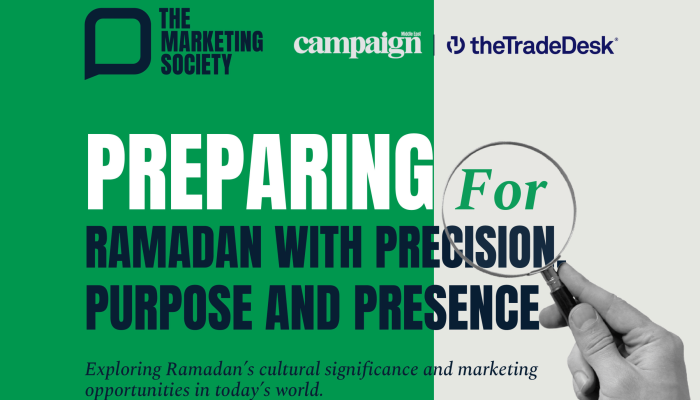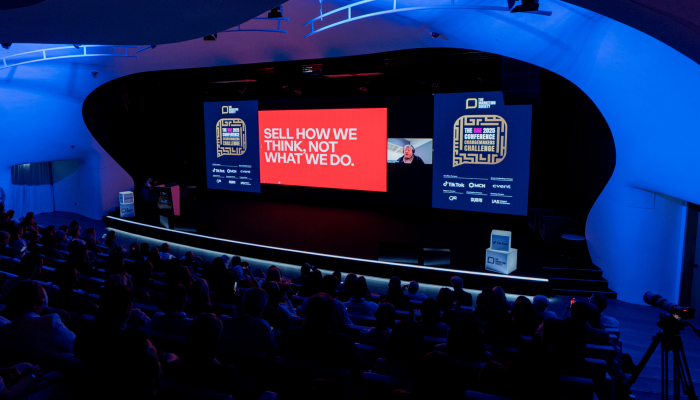So far, we have learned that communication that evokes an emotional response can help both its ease of processing and its memorability and that, in our decision-making, it is motivation that makes us do things and not emotion.
The findings of part two left us with the consequential question of where emotion fits within our decision-making, which we will now address.
Our current desires, needs, goals and jobs to be done drive our behaviour and this is managed by the reward system in the brain. But, in order to learn and to guide future choices, we also need a feedback system that tells us if the choices we made were appropriate.
This is where emotion fits in
Emotions are the feedback mechanism by which we gauge (via conscious ‘feeling’) the extent to which we are meeting our goals.
So first we decide (or buy), then we experience an emotion that tells us if this was a good decision or not. As stated earlier, our brains are in a constant state of prediction and these prediction errors (whether positive or negative) will result either in positive or negative affect. When we achieve our desired goal we experience happiness, joy, positive surprise or calm whereas non-achievement causes us to experience anger, sadness and anxiety. In each case, the emotion is a result of, and not a trigger for, behaviour.
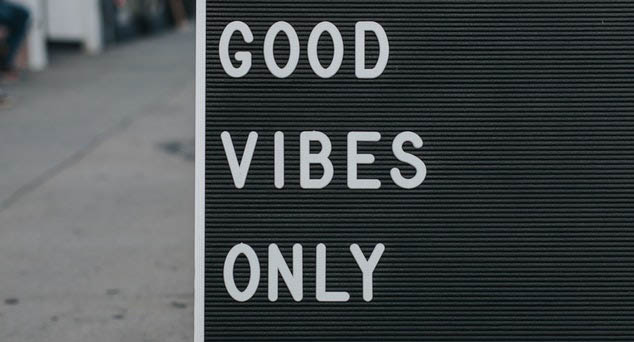
Put simply, in the words of Professor Roy Baumeister, “Emotion serves as an inner mechanism to reward and punish behaviours”. If a behaviour leads to negative emotion we can retrain ourselves and avoid this behaviour in the future. For example, if we go to a restaurant and have a bad meal, we feel disappointment and hence we ‘learn’ to avoid that restaurant in the future. If a behaviour leads to positive emotion we learn to repeat the behaviour.
As we have seen, emotional communication is an effective vehicle, but it is not the message. To impact behaviour, we firstly need a message that increases the perceived goal value of our brand, a message that shows that the brand is instrumental in helping us achieve our goals: if you use this brand, you can accomplish the desired state and achieve the desired outcome.
These outcomes can be functional, social or mood states and feelings. A shampoo can repair the hair (functional), can also make you admired (social) and you treat yourself (mood) with the shampoo because it has precious ingredients.
The goal value will drive behaviour and this message must be consistently landed across all touchpoints.
To increase the impact of communications, in appropriate media, the power of emotional response should be leveraged in order to optimise attention, recall and increase the likelihood of sharing.
The what and how
Let’s look at some key consideration questions in relation to leveraging this, using the example of the successful John Lewis ‘Moz the Monster’ Xmas TVC (2017).
To ensure we maximise the impact of our communication we need to get both the WHAT (motivation) and the HOW (emotional engagement) right:
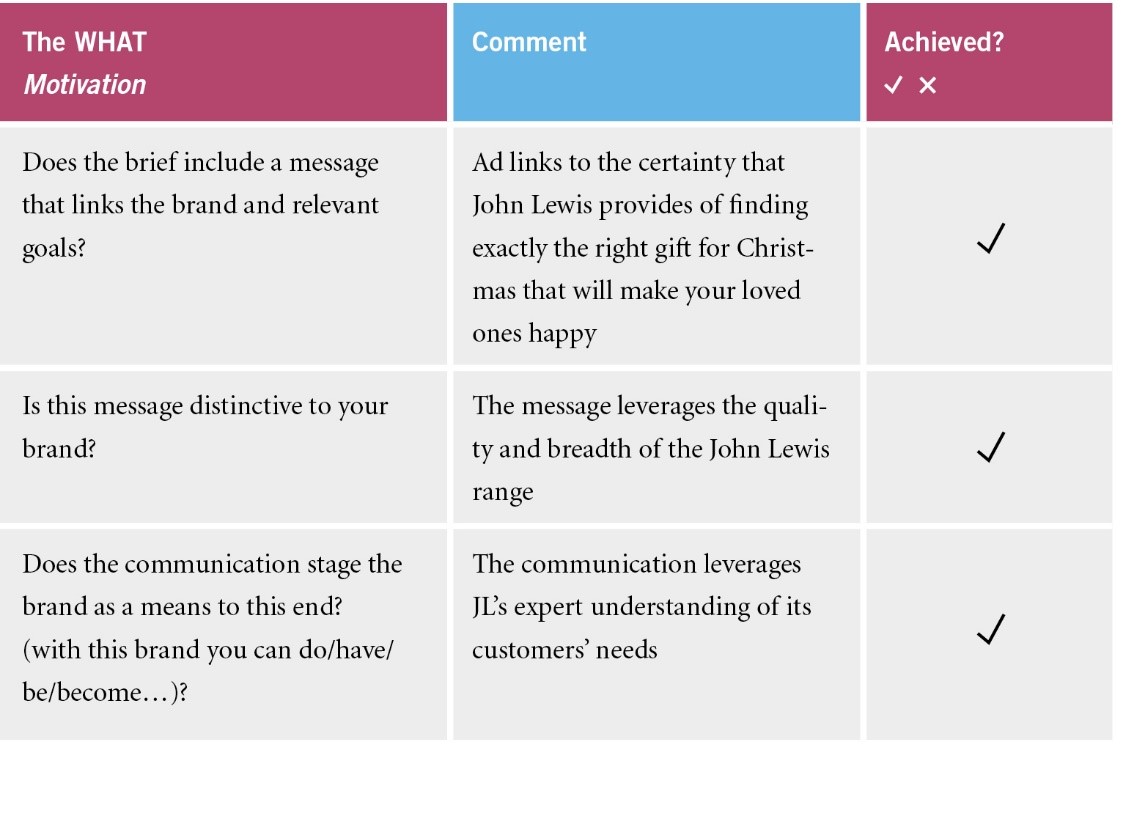
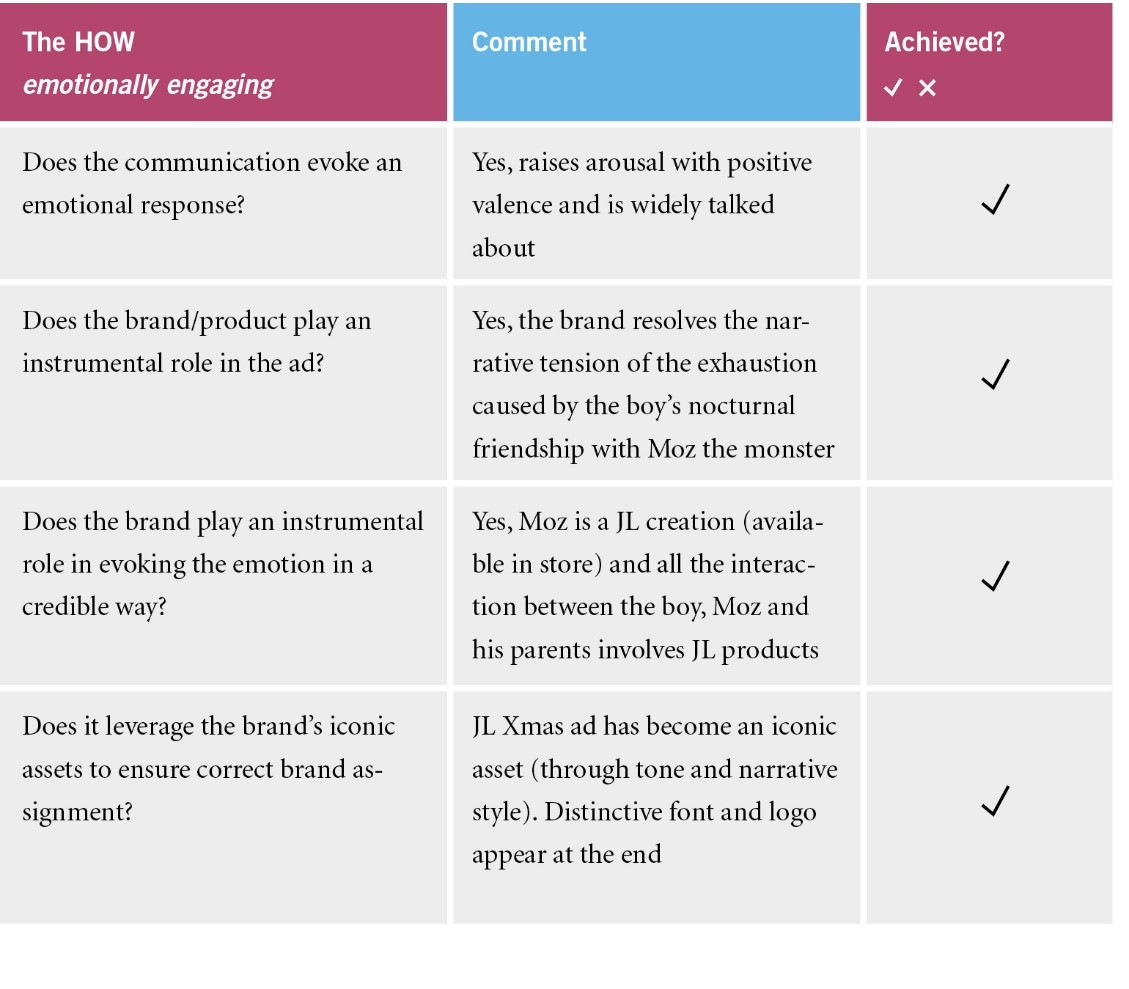
Summary
Science clearly shows that there is a gatekeeper that stands between an emotional ad and actual brand choice: motivation. Motivation, not the emotional response while watching the ad, is what makes people do something – and motivation is very different from emotion.
Motivation – our desires, needs, goals and ‘jobs to be done’ – determines behaviour and choice. In fact, actual behaviour is not caused by emotion – emotion is a feedback mechanism that tells us if the decision we made brought us closer to our desired state or outcomes.
Motivation to buy a product develops if the ad stages the product as an effective means to get a ‘job’ done. A job can be functional and/or psychological or social. The desire to change our mood can also be a job that products help to accomplish.
An emotional response triggered by an ad can make the ad a more effective vehicle for the motivational message, but the emotional response while watching the ad is only a response – it is not the message in itself.
In briefs, agencies are often asked to create an emotional ad. Whilst that is not wrong, if there is no motivating message the impact on sales will be random. What’s more, a focus on emotional responses can result in generic briefings like “make people love our brand” or “bring back love”. But this offers no real guidance for creative development.
To impact sales, the ad needs to convey the right motivational message (the WHAT) in an emotionally engaging way (the HOW). Successful ads deliver on both.
By Phil Barden, managing director, DECODE marketing ltd
References
- Barrett, Lisa Feldman. 2017. How emotions are made. Houghton Mifflin Harcourt, New York
- Baumeister et al (2010); Does emotion cause behaviour (apart from making people do stupid, destructive things)? In Agnew et.al. (2010); Then a miracle occurs: Focusing on Behaviour in Social Psychology Theory and Research; Oxford University Press
- Baumeister RF, Vohs KD, DeWall CN, Zhang L.; How emotion shapes behaviour: feedback, anticipation, and reflection, rather than direct causation. Pers Soc Psychol Rev. 2007 May;11(2):167-203.
- Camerer, Loewenstein, Prelec; (2005); Neuroeconomics: How Neuroscience Can Inform Economics; Journal of Economic Literature Vol. XLIII (March 2005), pp. 9–64
- Falk, E et al (2013). Creating Buzz: The Neural Correlates Of Effective Message Propagation. Psychological Science, 24(7):1234-42
- Letters to the editor, Nature Neuroscience volume 5 no. 11 November 2002
- Zaltman, Gerald. 2003. How Customers Think. Harvard Business School Press. Boston, Massachusetts

